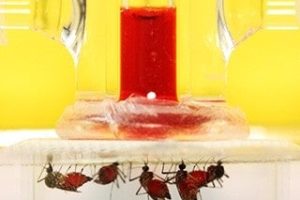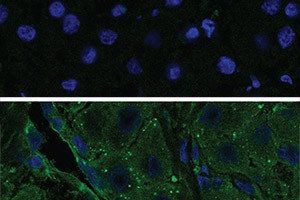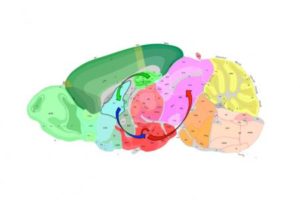rockefeller university
Gene identified that prevents stem cells from turning cancerous
Stem cells, the prodigious precursors of all the tissues in our body, can make almost anything, given the right circumstances. Including, unfortunately, cancer. Now research from Rockefeller University shows that having too many stem cells, or stem …
Link found between estrogen, changes in brain structure, and learning and memory
Scientists have discovered how estrogen initiates physical changes in rodent brain cells that lead to increased learning and memory — a finding, the researchers contend, that illustrates the likely value of the hormone to enhance brain functioning in women. Their study, published in the March 15 issue of The Journal of Neuroscience, describes for the first time a chain of molecular events that is activated in the brain’s primary memory center, called the hippocampus, when estrogen bathes nerve cells.
Backstage with a command performer
Some cells sing with the chorus, while others unwittingly achieve fame on their own. The immune system’s B cell is a true diva that spends its early days preparing for the ultimate audition. Its repertoire of possible antibodies to invading microbes totals 50 million. For the immune system, this repertoire means the difference between destroying a potentially lethal antigen or not. Since the late 1970s, the genes for making immunoglobulin, a family of blood proteins that compose the antibodies, sufficed to explain the B cell’s vast oeuvre. A B cell that is mature enough to respond to antigen does so by combining genes in a process called immunoglobulin gene rearrangement. Many possible combinations during this process allow a wide catalog of antibodies to literally take shape. Now, a biochemical phenomenon involving changes to stationary proteins in the B cell’s nucleus, called histones, is known also to contribute to the cell’s various solo performances.
Young plant's natural defenses amount to more than just its seed
In the presence of the plant hormone ABA, young Arabidopsis plants will hold off on growth until outside conditions become favorable (top). Mutant plants overproducing the newly identified AFP protein, on the other hand, lack this developmental arrest and blossom without delay (bottom). These and other experiments indicate that AFP helps to restore growth in normal plants by terminating the developmental arrest.
Deadly coral toxin exposes ion pump’s deepest secret
Right now, in your body, tiny pumps in the fatty membranes surrounding all your cells are hard at work pushing select charged ions, such as sodium, potassium or calcium, through those membranes. Like a water pump in a high-rise apartment building overcoming the force of gravity to move water up to a tank on its roof, these ion pumps work against “electrochemical gradients” to transport ions from one side of the membrane to the other. Now, researchers at The Rockefeller University report using palytoxin, a deadly coral-derived toxin, to pry open perhaps the ion pump’s deepest secret: that it is essentially a more elaborate version of an ion channel.
‘Outlaw’ organism turns informant
In a critical scene in the film remake of the classic 1960s TV series “The Fugitive,” actor Harrison Ford sheds his coat and replaces it with another. This simple deception allows him to escape detection by the swarm of police officers trailing him. The African trypanosome, a blood parasite that causes African sleeping sickness, is, like Ford’s character in the film, a fugitive that changes its “coat” each time the human immune system is about to nab it. Woven of 10 million copies of a single sugar-coated molecule called a glycoprotein, the trypanosome’s surface changes every few days by virtue of a switch that activates a new gene.






